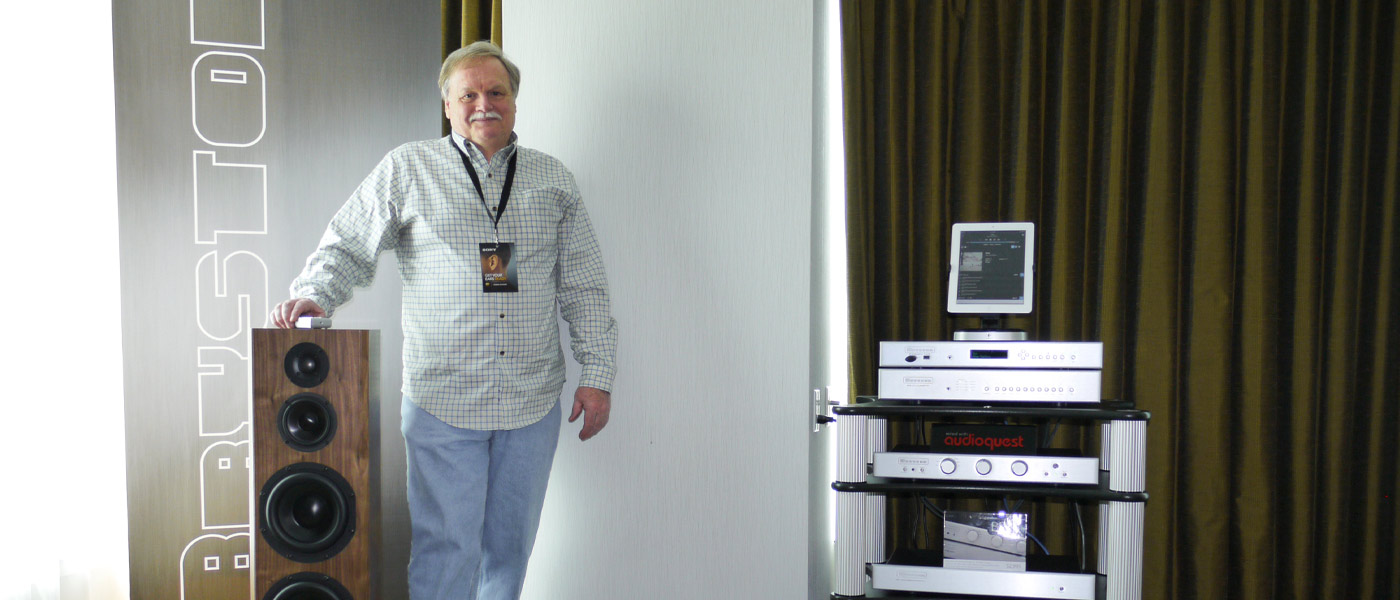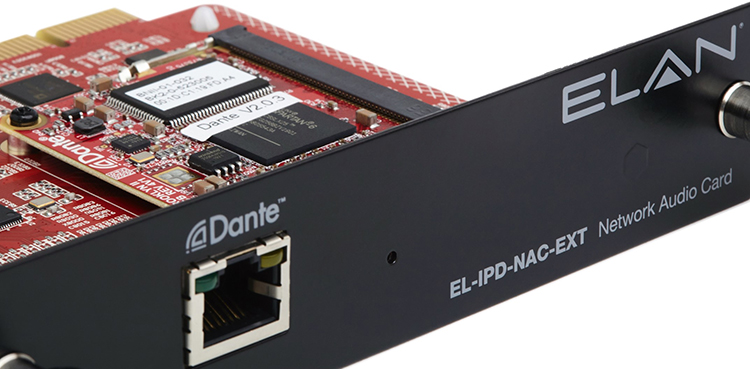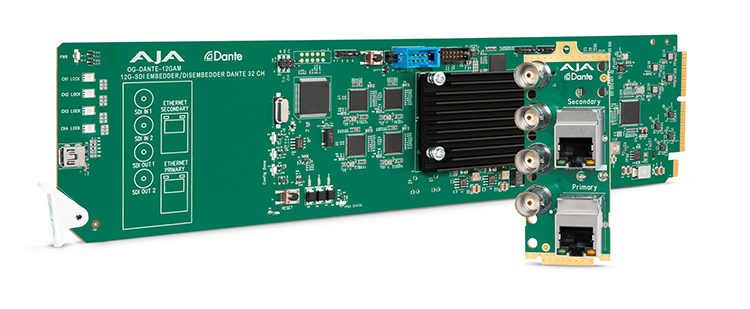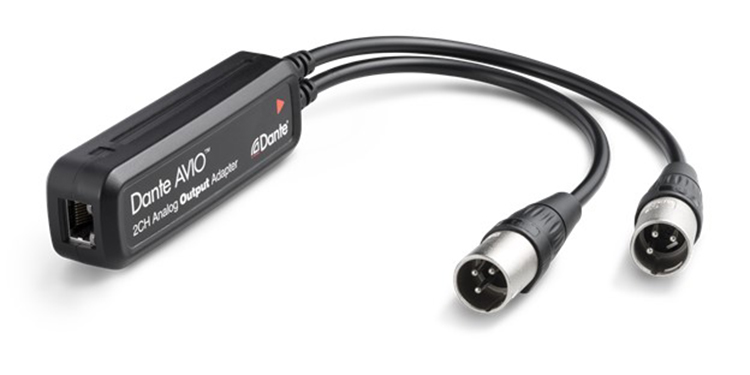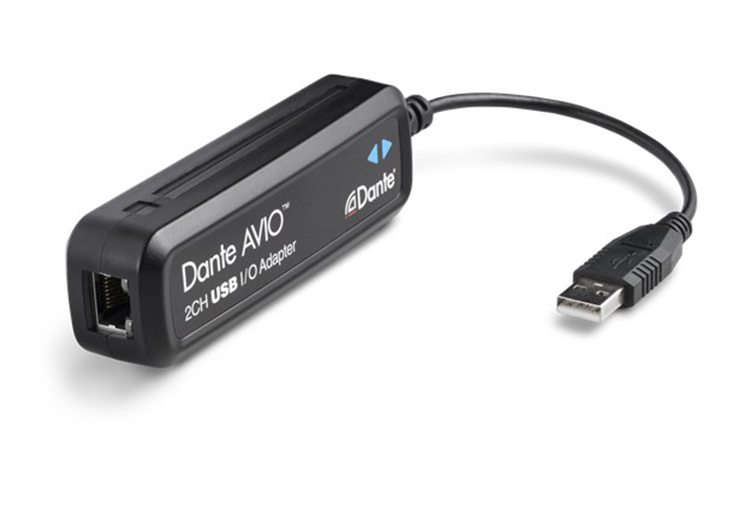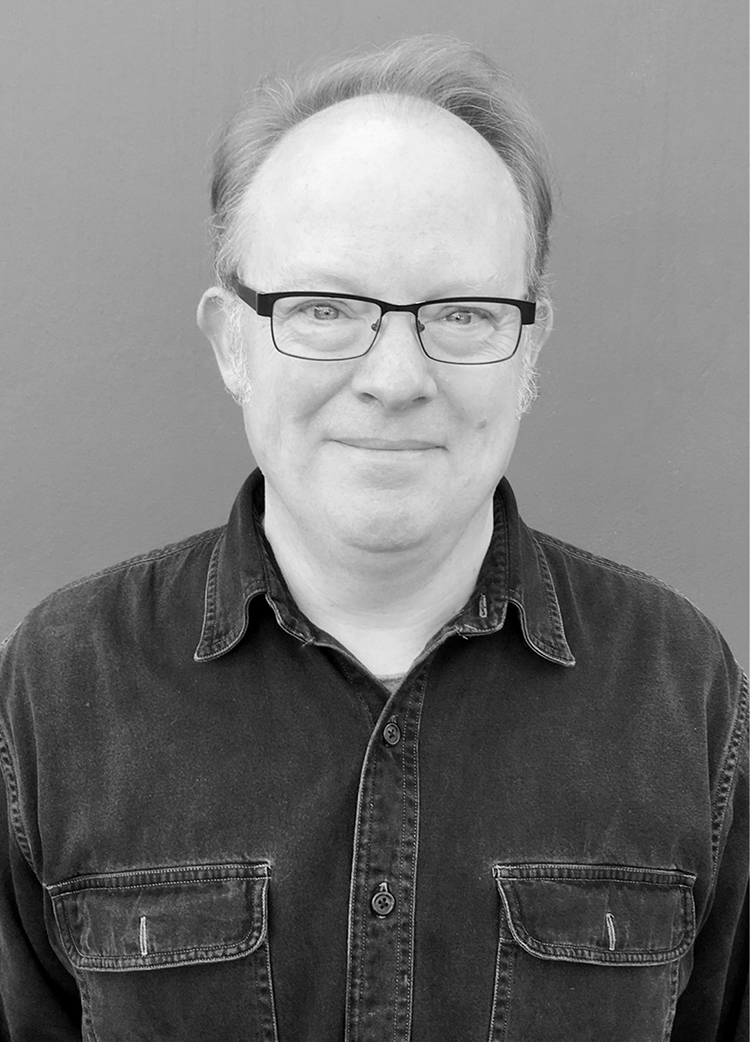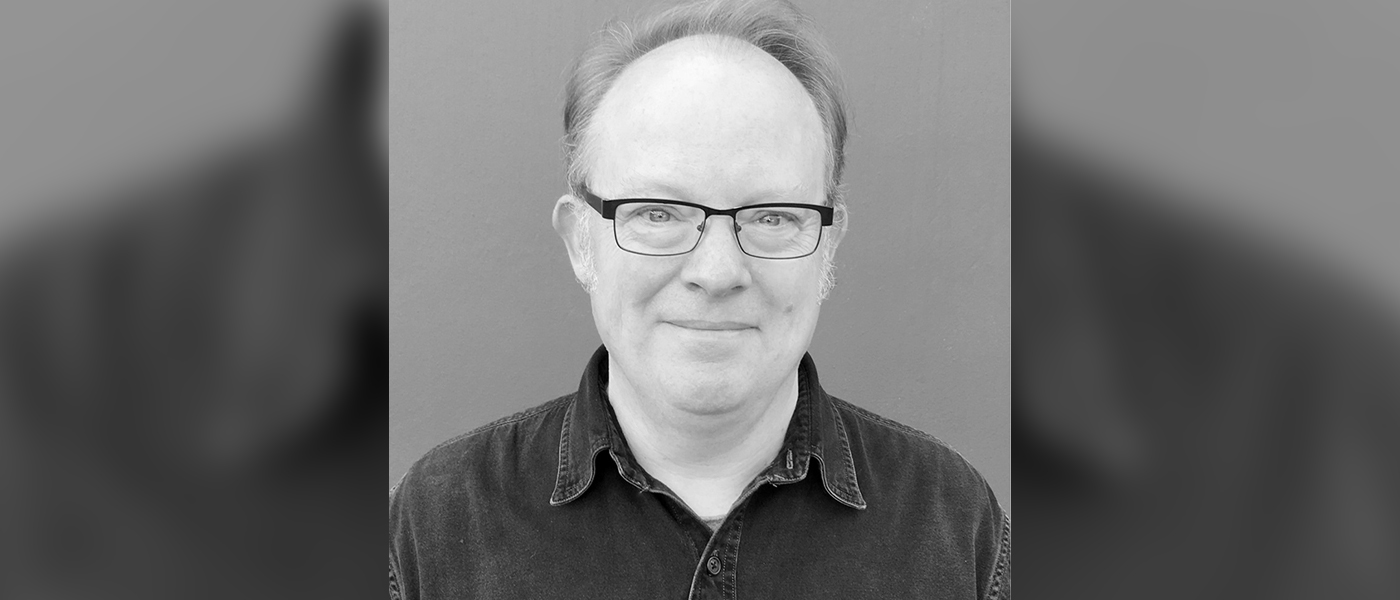
Its purpose is to reliably transmit high volumes of uncompressed audio over Ethernet cable networks. Recently it has started to appear as a feature on some higher-end home theater processors and receivers like those from JBL Synthesis, among others. With whole-house wired networks becoming more common in newer home builds and a viable retrofit in many existing homes, we wanted to explore if the use of Dante may see wider adoption in the consumer world. Our intrepid reviewer Sumit Chawla discusses all things Dante, with Brad Price, engineer and marketing expert from Audinate, the folks who developed it.
Q: Can you please talk about when and how Audinate started?
A: Audinate was started by Aidan Williams in Australia in 2003. A network engineer and musician, Aidan considered that gigabit networking was a far more flexible and perfectly suitable way to transport uncompressed audio, with none of the messiness of USB, analog, and non-IP based digital. He developed earlier proofs of concept and then worked with other network engineers at Australia’s Information and Communications Technology (ICT) Research Centre of Excellence. Dante was developed into a viable product, and the project was spun out to the public as Audinate
Q: How has the Dante platform evolved since its inception?
A: Dante was introduced with many of its key features intact and, in fact, all Dante devices can still work together today, including very early editions. What has been added over time is increased manageability, security, stability, and adaptations such as AES67 support. All these changes have been customer-driven as the product is used in more and more settings and circumstances.
Secrets Sponsor
For us, a bigger change is the way we offer Dante. In the earliest days, we had only a single hardware module to sell and Dante Virtual Soundcard software. Now we have Dante implemented in many different hardware and software flavors to accommodate a very wide variety of applications, from small single-channel microphones to massive studio consoles sporting 512 channels.
Q: Did Audinate solely target the professional market initially?
A: We originally marketed Dante to the professional market because we identified it as a sector where Dante could make the biggest impact in the shortest amount of time. The professional market needed extremely high-quality, high-reliability solutions for large channel count audio and Dante was there at the right time. It proved itself very quickly.
Q: And the name … does it have an Italian connection?
A: Everyone loves great poetry!
Q: Dante has been widely adopted in the professional markets. It is now making in-roads into the residential market. When and how did this market segment become attractive to Audinate?
A: We started fielding inquiries from the residential market a few years ago. It seemed like a good fit from a technical perspective, and so we began engaging with manufacturers to understand the market better. Recently, the floodgates have opened, and we are seeing quite a lot of interest. Part of this is due to the changes we’ve made to the delivery of Dante, as noted above. We now offer Dante in flavors better suited to this market.
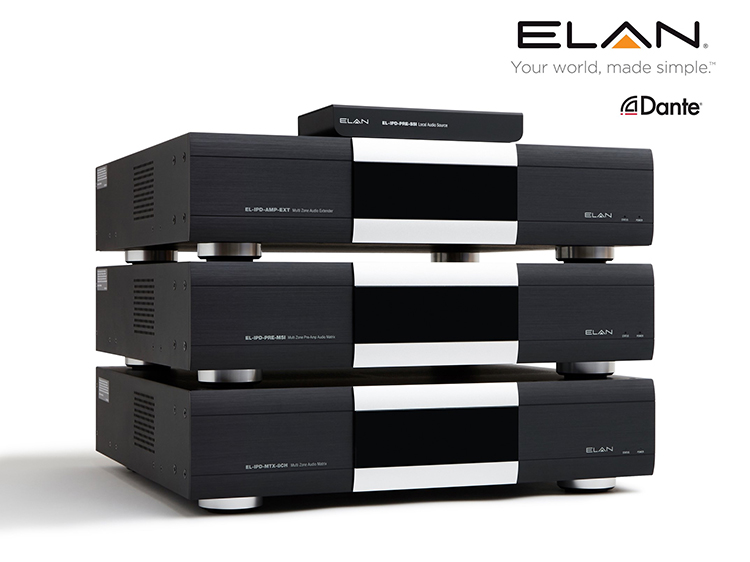
Q: How do you see the market awareness and adoption of Dante in the custom install market?
A: We put in a lot of effort to reach out to many people in the AV world, and we are seeing increasing numbers of requests from residential installers. Our job is then to let them know about the products on the market that suit their needs, whomever makes them. Awareness and adoption come as part of a snowball effect: installers make inquiries and manufacturers respond with products. Residential is following this pattern.
Q: Are there any differences between the commercial and residential implementation of Dante?
A: No, not in the slightest. We provide APIs that allow manufacturers in different markets to implement Dante control as they please, but the underlying technology is always identical.
Q: What does Audinate provide manufacturers with to enable Dante?
A: We offer Dante to manufacturers in several different forms to suit different needs:
- Hardware modules that are integrated into hardware products. These modules provide the network interface for Dante and the audio I/O that the products “see” on the inside. We offer hardware solutions from 1×1 channels up to 512×512 channels to cover a very wide range of applications.
- Software implementations. Many audio products today are internally based upon computers running Linux to perform all their functions, and so we offer Dante as software that runs on those computers. We also offer Dante as a library for Windows and MacOS computers so that Dante can be “baked into” applications run by users.
- Control. A big part of Dante is the control aspect. In addition to a free configuration tool (Dante Controller), we offer manufacturers the Dante API to allow them to express control however they wish – as part of their configuration software, on a touch panel, or internal control within a product.
A manufacturer that chooses to use Dante must select one or more of these methods, and then begin the work of integrating Dante as a type of I/O.

Q: Dante transmits data over a standard IP network. How do you achieve low latency and synchronization across multiple clients on a network?
A: That was the first problem to solve. Dante combines a few elements to make this work. First, we rely upon the IEEE1588 Precision Time Protocol (PTP) that allows all nodes on a network to agree upon a perfect time reference – each device “knows” the time in reference to a master clock, with all delays accounted for automatically. Second, we take advantage of the sheer speed of a gigabit network to get packets where they need to be, using UDP to reduce error-correction delays. UDP is a rapid data protocol that avoids error correction to achieve great speed. The incredible reliability of wired Ethernet allows for the use of UDP, and we see virtually zero packet loss on any well-constructed network, using nearly any brand of switch.
The net result is a system that easily accommodates hundreds of devices and hundreds of channels on a single network with no errors, no dropouts. Latency in Dante is deterministic – that is, fixed in value – by the user, and may be set as low as 125 microseconds (1/8 of a millisecond). The default latency setting of 1 millisecond is widely used and accommodates very large networks if required. Whatever latency you choose, the devices obey and provide completely synchronized output.
If there are any problems, our free software can help identify the culprit (which is almost always a misconfigured switch).
Q: Is a wired network required, or can one transmit Dante over WiFi?
A: Dante only works over copper Ethernet or fiber. WiFi is still far too unreliable to work at low latency in any real-world environments.
Q: What are the bit depth, sampling rate, and channel count capabilities over a 1 GigE network?
A: Different manufacturers can choose to support whatever bit rates/depth they wish, as that is a function of their products as well as Dante itself. As for Dante itself, it supports sample rates between 44.1 kHz and 192 kHz, bit depths of 16, 24, or 32 bits, and channel counts of up 512 x 512 at 48 kHz, 24-bit depth.
I should note that all Dante audio is uncompressed and totally lossless.
Q: What about video?
A: We’ve recently introduced our first video product: Dante AV. Dante AV is a hardware product designed for ubiquitous 1 Gigabit networks and therefore employs video compression. We’ve selected JPEG2000 as our codec of choice because it offers the best combination of network performance and visual fidelity. Dante AV is sufficiently open so that a manufacturer who wishes to use a different codec may do so, as long as it works on a 1 Gigabit network.
Our implementation supports up to 4K60 4:4:4, HDCP v2.3 encryption/decryption, and supports 8 channels of Dante audio. Unlike other AV-over-IP solutions, Dante AV employs a common clock for both audio and video, allowing for perfect sync of endpoints. It uses exactly the same discovery and connection methods as Dante audio.
Q: For HDCP content, is there any restriction on the bit depth or sample rate?
A: When using HDCP content, audio is restricted to 48 kHz, 24-bit depth.
Q: How do transmitters and receivers discover each other on a network, and how are their capabilities advertised?
A: All Dante devices are auto-discovered using Bonjour zero-configuration. This is a simple multicast protocol that is commonly used for discovery. Dante Controller software is used to display all discovered devices and permits instant connection of audio and video. All Dante devices are connected by a DNS name, not an IP address. Addresses may be fluid with no effect upon behavior. Devices may be renamed to be readily identifiable, and channels may have individual persistent labels as well.
Connections in a Dante system are made using Dante Controller software (Windows or MacOS). Devices are presented as a grid of transmitter and receiver channels, and a user need only click at the intersect of a transmitter and receiver channel to establish a subscription. That’s it.
I’ll add that Dante devices all “remember” their subscriptions, so if a system is powered down and up again, all devices will automatically reconnect exactly as they were.
Q: Can there be multiple transmitters on a network? If so, can a receiver subscribe to multiple transmitters?
A: There is no restriction of transmitters or receivers. Most devices are both. A receiving device may receive signals from multiple transmitters on a channel-by-channel basis.
Q: Is the configuration, bit depth, and sample rate fixed or variable once the link is established?
A: These may be changed by the user with no effect upon channel subscriptions. However, not all devices can support all sample rates – that’s up to the manufacturer.
Q: Are these parameters fixed or independent across each link?
A: Independent. However, Dante does NOT perform sample rate conversion (SRC). If one device is set to 96 kHz and another to 44.1 kHz, audio cannot be transmitted between them.
Multiple sample rates can be used on the network at the same time. For example, a set of devices can be communicating at 96 kHz while others are at 48 kHz – it’s only that those two groups cannot share audio between them.
Q: Is volume controlled by the source or can it also be controlled by the receiver?
A: Dante doesn’t control volume at all, that is implemented in Dante-enabled products elsewhere in the design.
Q: Is network congestion monitored? If so, is there any dynamic renegotiation (bit depth, sample rate, frame rate/resolution) to reduce the bandwidth?
A: No. Good network design obviates the need for that. Network switches are the best place to put this type of monitoring – and Dante is not a part of network switches. The audio channel count required to cause problems on a Gigabit network is very, very high (hundreds of channels on each port simultaneously). In practical applications, this is not a significant issue.
Q: Is there any provision for down-mixing when there is a channel count mismatch between devices?
A: No. Dante is strictly channel-to-channel and doesn’t edit, mix or alter audio signals at all. Any downmixing logic can be contained elsewhere in Dante-enabled products.
Q: You have a variety of adapters that allow one to mate a Dante-connected system with legacy audio gear. Please talk about this line and the Dante Virtual Soundcard which provides Dante connectivity to a Mac/PC.
A: Our AVIO line of Dante adapters has proved very, very popular. They are inexpensive, low-channel count interfaces that provide on- and off-ramps to Dante networks for analog signals, AES/EBU signals, and USB audio. Note that larger, more sophisticated versions of these are on the market and made by many manufacturers; the AVIO line targets the cost-conscious end of the market and they are very simple to use.
Secrets Sponsor
We have many AVIO customers who use the analog versions to adapt powered speakers and analog mixers to a network. The USB version allows you to plug into any computer and use it like any other stereo USB audio device, only now signals are to and from the Dante network.
Dante Virtual Soundcard is one of our oldest and most successful products. It runs on Windows or MacOS and provides up to 64×64 channels of Dante audio via a built-in Ethernet jack or an Ethernet adapter. On the computer end, it provides a standard audio interface for software applications; Core Audio on MacOS, and WDM or ASIO audio for Windows. It’s very inexpensive and wildly popular and is used extensively in recording studios and for capturing live shows in full multitrack glory.
Many thanks to Brad Price for sharing details about Dante and to Erik Hidle for facilitating our conversation.
Brad Price is an engineer turned marketing expert, with a BSEE from MIT and extensive experience in pro audio. At Audinate he works to increase awareness of powerful AV-over-IP solutions.


